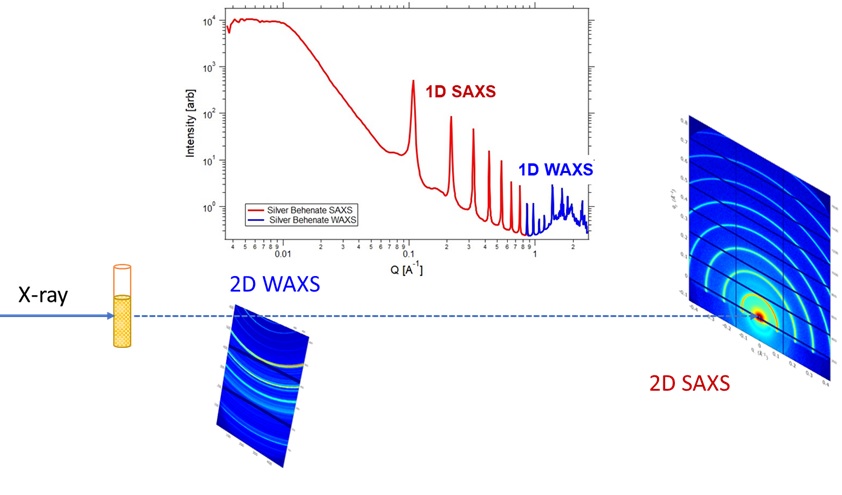SAXS/WAXS
Small- and Wide-Angle X-ray Scattering

Simultaneous small- and wide-angle x-ray scattering (SAXS/WAXS) in transmission mode (with x-ray shooting through the sample) is the most frequently used setup at Beamline 12-ID-B.
Detectors
Two detectors are utilized for simultaneous SAXS/WAXS: a Pilatus 2M at a far distance for SAXS measurements, and a Pilatus 300K at a near distance for WAXS measurements. Both detectors are in a vacuum chamber to reduce the air scattering.
Setup
The position of the WAXS detector is fixed, about 45cm from the sample, covering Q range of ~0.8-~2.7 A^-1, or 2theta of 7-24 degrees. The SAXS detector position is motorized and in the range of 0.7-3.6m away from the sample position.
Camera Length
Two SAXS detector positions (also called camera lengths) are typically used at this beamline: 2m and 3.6m. At 2m camera length, the SAXS Q range is about 0.003 - 0.9 A^-1 and has Q overlapping with the WAXS data. The 3.6m camera length provides the lowest Qmin of ~0.002A^-1, and Qmax is about 0.5x A^-1 and will have a Q gap with WAXS data at 0.5x-0.8x A^-1.
Beam Size
Simultaneous SAXS/WAXS uses an unfocused beam, and the typical beam size on the sample is about 0.12mm(H) X 0.08mm(V).
Energy & Exposure Time
Two x-ray energies are frequently used at this beamline: 13.3 and 14 keV. Typical x-ray exposure times for a single measurement are 0.1-10 seconds.
Averaging
The 2D SAXS and WAXS images are automatically converted to respective 1D data sets in real time during measurements.
Note 1: All Q values shown above were for measurements when using 13.3 keV x-ray.
Note 2: 12-ID-B has a third detector, PerkinElmer XRpad 4343F which can measure even larger Q(>3 A^-1). This detector is outside the vacuum chamber, about 18 cm away from the sample and the Q range is ~0.4-10 A^-1. Since all the system is in air, the air scattering contribute significantly on the detector and this setup is normally used for strong scatterers.
